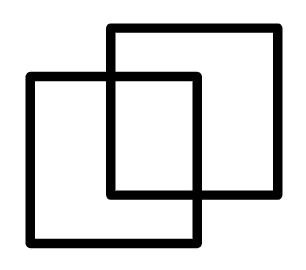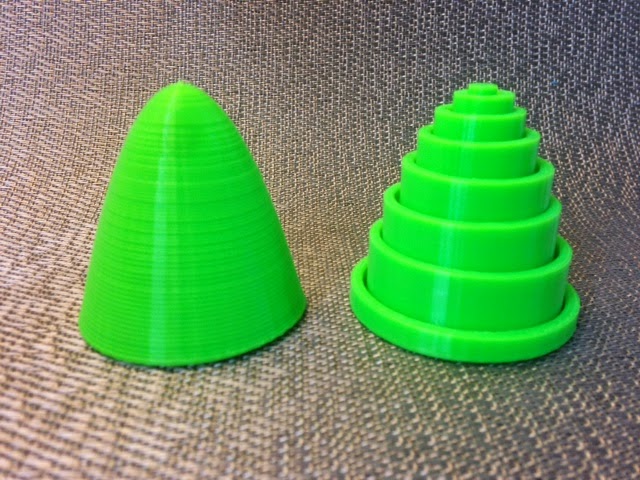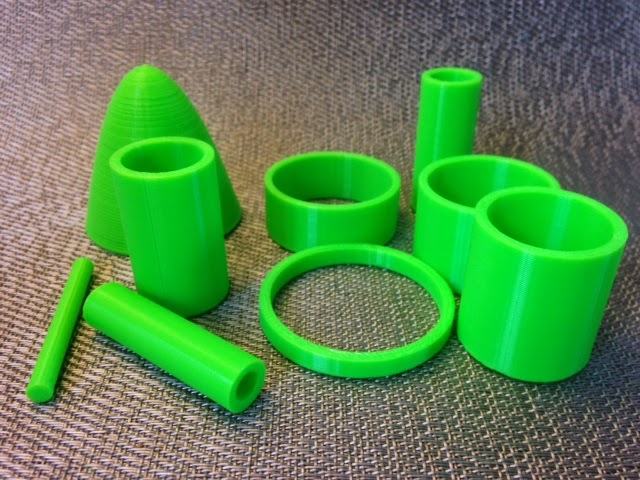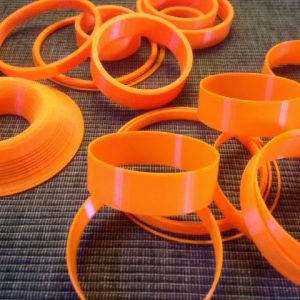Tomorrow in calculus we’ll be discussing how to approximate volumes of solids of revolution using “shells”. This is traditionally a very difficult concept for students to visualize, so having a physical model is really helpful. The trouble is, no physical models seem to exist. We’ve all talked about “onion skins” or brought in Quarto pieces or other shell-like objects, or even cut cakes into shells for illustration, but those things are just simplified versions of the situation. Our volumes-by-shells model on Day 144 was nice, but made in Tinkercad and thus not very customizable. Today we upgrade to an OpenSCAD model. The model shown on the left is the solid obtained by revolving the region between the graph of y=4-x^2 and the x-axis on [0,2] around the y-axis, and the model on the right is an approximation of that solid using eight shells.
The shell model comes apart into its individual shells:
Thingiverse link: http://www.thingiverse.com/thing:305282
Settings: Printed on a Replicator 2 with .3mm/low default settings.
Technical notes, math flavor: (Apologies for the bad math typesetting is what is to follow; I haven’t had luck with WordPress and math formatting or embedding LaTeX code.) These heights of these shells were determined using the midpoints of eight subintervals from x=0 to x=2. The reason we use the midpoints is that it allows us to use a very nice formula for computing the volumes of the shells that will allow us to construct a Riemann Sum, and thus a definite integral, to express the exact volume. Suppose we’ve subdivided [0,2] into eight subintervals of the form [x_{k-1},x_k]. Then each shell is just a really tall washer with inner radius x_{k-1}, outer radius x_k, and height given by the function curve somehow. Let’s take the height at the midpoint m_k = (x_{k-1}+x_k)/2 of the subinterval. Then our kth shell has volume:
By factoring out like terms we can turn this into:
Now using the fact that a^2-b^2 = (a+b)(a–b), together with the definition of m_k and DeltaX = x_k – x_{k-1} and a bit of algebra, we can write this volume as:
This formula isn’t any easier to use in practice, say if we were to actually calculate and add up the volumes of the eight shells pictured above; however the form of this kth volume expression – and in particular the presence of the DeltaX in the expression – allows us to construct a definite integral that represents the exact volume of the solid of revolution.






Leave a Reply